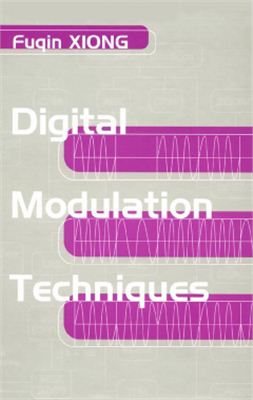Издательство Artech House, 2000, -686 pp.
Digital modulation techniques are essential to many digital communication systems, whether it is a telephone system, a mobile cellular communication system, or a satellite communication system. In the past twenty years or so, research and development in digital modulation techniques have been very active and have yielded many promising results. However, these results are scattered all over the literature. As a result, engineers and students in this field usually have difficulty locating particular techniques for applications or for research topics.
This book provides readers with complete, up-to-date information of all modulation techniques in digital communication systems. There exist numerous textbooks of digital communications, each of them containing one or more chapters of digital modulation techniques covering either certain types of modulation, or only principles of the techniques. There are also a few books specializing in certain modulations. This book presents principles and applications information of all currently used digital modulation techniques, as well as new techniques now being developed. For each modulation scheme, the following topics are covered: historical background, operation principles, symbol and bit error performance (power efficiency), spectral characteristic (bandwidth efficiency), block diagrams of modulator, demodulator, carrier recovery (if any), clock recovery, comparison with other schemes, and applications. After we fully understand the modulations and their performances in the AWGN channel, we will discuss their performances in ultipath-fading channels.
Introduction.
Baseband Modulation (Line Codes).
Frequency Shift Keying.
Phase Shift Keying.
Minimum Shift Keying & MSK-Type Modulations.
Continuous Phase Modulation.
Multi-h Continuous Phase Modulation.
Quadrature Amplitude Modulation.
Nonconstant-Envelope Bandwidth-Efficient Modulations.
Performance of Modulations in Fading Channels.
Power Spectral Densities of Signals.
Detection of Signals.
Digital modulation techniques are essential to many digital communication systems, whether it is a telephone system, a mobile cellular communication system, or a satellite communication system. In the past twenty years or so, research and development in digital modulation techniques have been very active and have yielded many promising results. However, these results are scattered all over the literature. As a result, engineers and students in this field usually have difficulty locating particular techniques for applications or for research topics.
This book provides readers with complete, up-to-date information of all modulation techniques in digital communication systems. There exist numerous textbooks of digital communications, each of them containing one or more chapters of digital modulation techniques covering either certain types of modulation, or only principles of the techniques. There are also a few books specializing in certain modulations. This book presents principles and applications information of all currently used digital modulation techniques, as well as new techniques now being developed. For each modulation scheme, the following topics are covered: historical background, operation principles, symbol and bit error performance (power efficiency), spectral characteristic (bandwidth efficiency), block diagrams of modulator, demodulator, carrier recovery (if any), clock recovery, comparison with other schemes, and applications. After we fully understand the modulations and their performances in the AWGN channel, we will discuss their performances in ultipath-fading channels.
Introduction.
Baseband Modulation (Line Codes).
Frequency Shift Keying.
Phase Shift Keying.
Minimum Shift Keying & MSK-Type Modulations.
Continuous Phase Modulation.
Multi-h Continuous Phase Modulation.
Quadrature Amplitude Modulation.
Nonconstant-Envelope Bandwidth-Efficient Modulations.
Performance of Modulations in Fading Channels.
Power Spectral Densities of Signals.
Detection of Signals.

